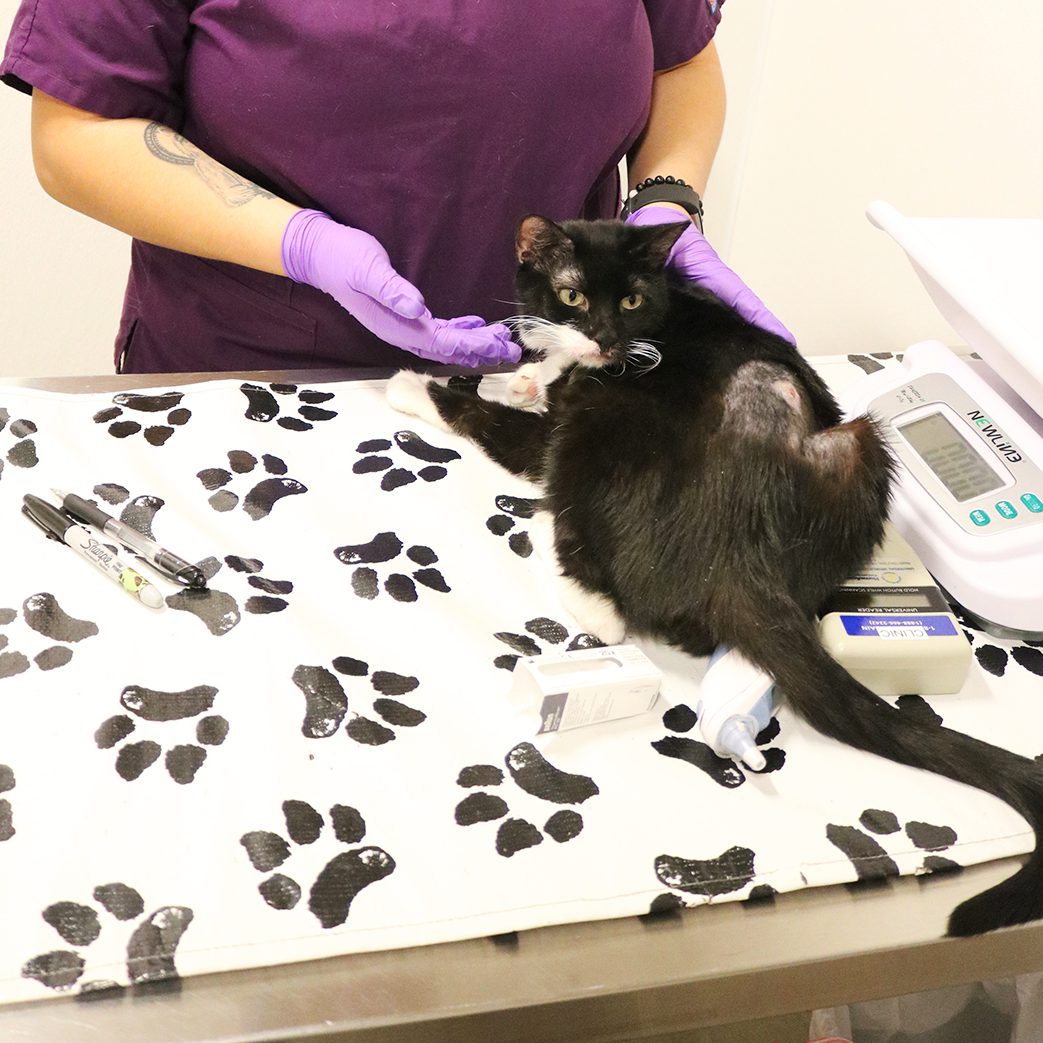It’s that blissful time of year again here in the Southwest where temperatures begin to heat up astronomically, cultivating an ideal playground for pesky pests like fleas and ticks. As two of the most common concerns for pet-parents, we want to be sure you are equipped with the tools and information you need to keep your pet safe from these parasites.
So, what exactly are fleas and ticks?
Let’s talk about ‘em! Fleas. These wingless nuisances plague an enormous number of companion pets each year. The most common type of fleas found on dogs and cats are known as “cat fleas” and are only able to survive and reproduce by living off the blood of their animal host. Fleas can look very similar to other small insects, and one simple way of identifying them is by seeing if they jump. Yes, really. Fleas may be wingless, but they are skilled jumpers, able to jump 100 to 200 times their size.
Similar to fleas, ticks are also parasites that feed on the blood of a host animal, however, they differ in that they don’t need to make their animal host home base. These parasites are arachnids and can carry and transmit many diseases to their host through their bite. Ticks prefer a humid and warm environment which is why you typically find them in the ears, underarms, between the toes, and other commonly warm areas of an animal.
Know the signs.
One of the first signs that your pet may have fleas is that they are constantly scratching or chewing at their fur. Your pet reacts this way because not only do fleas produce a sharp pain when they bite, but they also have an ingredient in their salivary glands that irritates the skin. In addition, you can often see fleas or ticks on your pet in areas where fur is less prominent. Fleas are small and copper-colored and can be identified by their jumping nature. Oftentimes, you will also be able to notice what is called “flea dirt”, these are deposits from the fleas that show up as small dark dots, but turn red when rehydrated. When looking for ticks, feel for uneven areas on your pet. If you feel a bump that shouldn’t be there, it could be a tick, and the quicker you remove it the less likely it is that your pet will contract an illness from the tick bite.
How to keep your pet safe.
When it comes to keeping your pet safe and healthy from these parasites, the best method of defense is prevention. Administering a year-round flea and tick preventative medication to your pet is an excellent option, and by consulting with your veterinarian you can easily determine which option will be most effective and safest for your pet. It’s also important to regularly inspect your pets and your home for signs that fleas and/or ticks may be present. If either are detected, be sure to treat ALL pets in the home as well as the surrounding environment.
These warmer, summer months are the most common times of the year for flea and tick season, and for most states that is true, in our wonderfully warm state of Arizona, however, flea and tick season really does last on a year-round basis. This is why it is so important to be vigilant in inspecting your pets and your home for these pests as well as taking advantage of preventative medication for your pet. Keeping them healthy and happy is the only goal!
Here at HSSA we care deeply about the health and wellbeing of every pet in our community and the HSSA Clinic is here to serve you and yours. We offer walk-in, low-cost vaccinations two times a week on Wednesdays and Saturdays where you are also able to purchase preventative medication like Heartguard and flea and tick prevention.
Information Sources
American Kennel Club | www.akc.org
ASPCA | www.aspca.org
Pets Web MD | pets.webmd.om








































